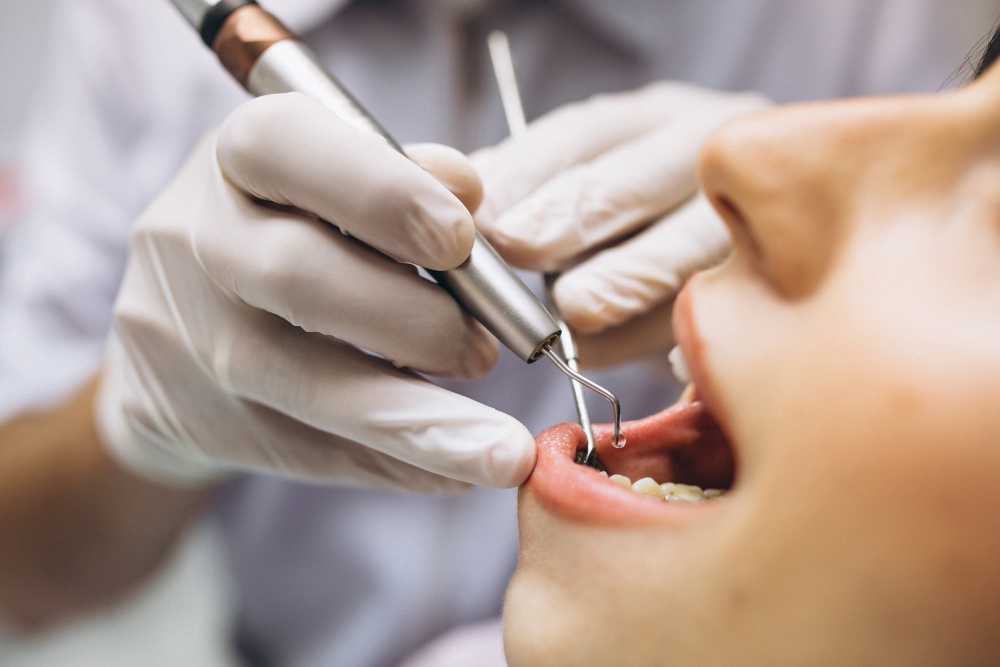Have you ever asked yourself, “do I have a cavity”? If so, this article is for you!
Many people associate cavities with intense pain. However, it’s not always that easy to tell if you have a cavity. Believe it or not, we often get patients in our office who ask us, “do I have cavities?”
If you need guidance on how to tell if you have a cavity, we’re here to help. Keep reading below to find out how to tell if a cavity is damaging your tooth.
Do I Have a Cavity?
Cavities can be found in people of all ages. Although they are commonly associated with young children, adults can get cavities, too. At Pueblo West Neighborhood Dental and Implants, we most commonly treat cavities in children, teens, and young adults.
Factors that contribute to the formation of cavities include diet, oral hygiene habits, and environmental factors. Eating sugary foods, not thoroughly flossing and brushing, and a lack of fluoride can all contribute to cavity formation.
To protect your teeth from cavity-forming bacteria, you should eat low-sugar or sugar-free foods and stick to a consistent oral health routine. Brush at least twice a day and floss at least once.
Signs of Cavities
So… do I have a cavity?
While only your dentist can give you a definitive answer to that question, there are some telltale signs to look out for. To learn how to tell if you have a cavity, stick to the three points below:
1. Tooth Pain
Tooth pain always has a cause, and any kind of oral pain is worth investigating. Cavities can cause different kinds of pain, from dull aches to sharp stinging sensations. Pain that occurs spontaneously or that seems to have no specific cause is one sign of a cavity.
Increased tooth sensitivity could also point to a cavity. This includes sensitivity or pain from very hot or very cold foods. You should pay special attention to tooth sensitivity if you haven’t previously experienced it or if it seems to come out of nowhere.
Watch out for pain when chewing or biting down, as this is another sign that your tooth might have a cavity. Also take note if a certain area of your mouth is painful to brush or floss.
2. Staining And Dark Spots
If you notice that a tooth’s appearance has changed, you might be experiencing decay. Look for stains on the surface of your tooth. These can be brown, black, yellow, or white.
Watch out for small dark spots, too. These are often located on the top surface of your tooth and might be hard to spot, so have a dentist take a look for you. If you notice a dark spot, a hole, or a pit in your tooth, it’s likely caused by decay and needs to be filled as soon as possible.
3. Bad Taste or Smell
Cavities are formed by decay, and decay can cause very unpleasant tastes and smells in your mouth. If you notice a bad taste that doesn’t go away after eating, drinking, or brushing your teeth, it’s time to ask yourself, “Do I have cavities?”. People describe the taste of a decaying tooth as bitter, rotten, and sour.
How to Tell If a Cavity Needs To Be Filled
Is your cavity serious enough to warrant a trip to the dentist? Even if it seems minimal or painless, you should schedule an appointment as soon as you suspect a cavity. The amount that your cavity hurts does not necessarily correlate to the amount of damage that it’s causing, and even painless cavities can be extremely harmful to your teeth.
Your dentist will be able to perform an exam and take X-rays to understand the full extent of your cavity. The sooner it’s filled, the sooner you can restore your oral health.
Make an Appointment Today
Don’t keep asking yourself, “Do I have a cavity?” (or, even worse: “Do I have cavities?”). Now that you know how to tell if you have a cavity and how to tell if a cavity needs to be filled, you should seek the help of a dental professional.
At Pueblo West Neighborhood Dental and Implants, we’ll fit you in for a filling as soon as possible. Contact us today to get your cavity taken care of!





